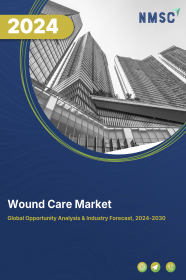
Wound Care Market by Product (Advanced Wound Dressings, Surgical Wound Care Products, Traditional Wound Care Products, Wound Therapy Devices and Others), by Distribution Channel (Institutional Sales and Retail Sales), by Mode of Purchase (Prescribed Products and Over-the-Counter Products), by Application (Acute Wounds and Chronic Wounds), and by End User (Hospitals, Ambulatory Surgical Centers, and Others) – Global Opportunity Analysis and Industry Forecast 2025–2030
Industry Overview
The global Wound Care Market size was valued at USD 22.4 billion in 2024, with an estimation of USD 24.24 billion in 2025 and is predicted to reach USD 32.06 billion by 2030 with a CAGR of 5.7% from 2025-2030.
The market is steadily expanding due to several key factors, including the growing number of people with chronic diseases, a rising preference for home-based care, and increased support from government and healthcare organizations. As conditions like diabetes and heart disease become more common, the need for long-term wound care is increasing. At the same time, more patients are choosing convenient and easy-to-use solutions they can manage at home.
Efforts to improve healthcare facilities and services are also helping the market grow. However, the high cost of advanced wound care products remains a major challenge. Despite this, new technologies such as smart wound care systems are creating promising opportunities for future market growth and better patient outcomes.
Rising Incidence of Chronic Diseases Fuels Wound Care Market Expansion
The global wound care market demand is witnessing significant growth, largely propelled by the increasing prevalence of chronic diseases such as diabetes, obesity, peripheral arterial disease, and cardiovascular conditions. These illnesses frequently lead to complications like diabetic foot ulcers (DFUs), venous leg ulcers (VLUs), and pressure injuries, all of which require advanced and ongoing wound care management.
In particular, according to the American Journal of Lifestyle Medicine (2024), Diabetic Foot Ulcers (DFUs), affecting 25% of individuals with diabetes, contribute significantly to the high volume of lower limb amputations, creating a consistent and growing demand for advanced wound care solutions. Consequently, it is clear that the rising prevalence of chronic diseases significantly contributes to the growth of the market.
Growing Preference for Home-Based and Self-Managed Wound Care Fuels Market Growth
The rising inclination toward managing wounds at home is becoming a key driver in the industry. Many patients, especially older adults and those with long-term health issues are turning to simple, affordable care options that offer greater control and independence. This shift is driving increased demand for advanced wound dressings that are easy to apply and manage at home.
For instance, in November 2024, the Virginia Department of Health (VDH) released an Infection Prevention Quick Guide for Wound Care, offering clear, step-by-step instructions for dressing changes, irrigation, debridement, and hygiene protocols suitable for non-professional at-home wound care. This guide not only empowers home caregivers and patients with standardized medical procedures but also reflects a growing institutional shift toward decentralizing wound management beyond clinical settings. It highlights the increasing trust in patient-led care and the need for accessible, safe, and informed wound care practices at home.
Increasing Government and Institutional Initiatives Fuels the Market Progress
Government and institutional initiatives are playing a crucial role in improving wound care infrastructure across the healthcare system. By investing in specialized wound care programs, expanding hospital capacities, and increasing training for healthcare professionals, these efforts are helping improve the quality and consistency of wound management across clinical settings.
For example, in January 2025, the U.S. Centers for Disease Control and Prevention’s Public Health Infrastructure Center announced that over USD 4.4 billion had been invested in 2024 through its Public Health Infrastructure Grant program. This funding was allocated to 107 states and local health departments to strengthen healthcare systems, expand workforce training, and improve service delivery. These initiatives are helping the industry grow by enhancing access to quality treatment, especially for chronic and post-surgical wounds.
High Cost of Advanced Wound Care Products Hinders the Growth of the Market
The high cost of advanced wound care solutions is limiting the market’s growth. These treatments often require significant upfront investment and ongoing maintenance, making them unaffordable for many smaller healthcare providers and public health systems. As a result, access to modern wound care remains uneven, which further restricts the market's overall expansion.
Smart Wound Care Technologies Present a Key Market Opportunity
The development of smart wound care technologies such as sensor-enabled bandages and data-driven wound monitoring systems is creating significant growth opportunities in the industry. For instance, according to Caltech (2025), a new smart bandage system called iCares has been successfully tested on 20 patients with chronic wounds including diabetic foot and venous leg ulcers. This device integrates sensors, microfluidics, and AI to monitor key biomarkers like nitric oxide and hydrogen peroxide in real time.
Additionally, the advanced capability allows for continuous, non-invasive monitoring and enables early detection of infections, up to three days before visible symptoms occur with clinician-level accuracy, thus presenting a significant growth opportunity for the market.
Market Segmentations and Scope of the Study
The wound care market report is segmented on the basis of product type, distribution channel, mode of purchase, application, end user, and region. On the basis of product type, the market is categorized into advanced wound dressings, surgical wound care products, traditional wound care products, wound therapy devices, and wound biologics. Based on distribution channel, the market is divided into institutional sales and retail sales. On the basis of mode of purchase, the market is segmented into prescribed products and over-the-counter (OTC) products. Based on application, the market is bifurcated into acute wounds and chronic wounds. Based on end user, the market is segmented into hospitals, ambulatory surgical centers, and others. Regional breakdown and analysis of each of the aforesaid segments includes regions comprising North America, Europe, Asia-Pacific, and Rest of the World (RoW).
Geographical Analysis
In the industry, North America maintains a leading market position, largely driven by heightened focus on preventing surgical site infections (SSIs), and this trend is expected to sustain its momentum. Healthcare institutions across the region are prioritizing infection control protocols to improve post-operative recovery outcomes and reduce healthcare-associated complications. For instance, the 2024 NHSN Patient Safety Component Manual published from the U.S. Centers for Disease Control and Prevention (CDC), reports that inpatient surgeries were associated with an estimated 110,800 surgical site infections (SSIs) in a recent annual survey.
Further data indicates a 2% year-over-year increase in the standardized SSI ratio in 2023, with SSIs now accounting for 20% of all healthcare-associated infections and adding approximately 9.7 extra hospital days, which carries an added cost exceeding USD 20,000 per case. Such high incidence rates and the substantial healthcare burden associated with SSIs are prompting greater demand for effective wound care solutions, thereby contributing significantly to the growth of the industry.
On the other hand, Europe is experiencing robust growth in industry, driven by aging population and chronic wounds. For example, according to Eurostat (2024), the EU’s population was estimated at 449.3 million on January 2024, with 21.6% aged 65 and over a 0.3 percentage point increase from the previous year and a 2.9 point over the past decade. This growing elderly population is increasingly prone to pressure ulcers, venous leg ulcers, and diabetic foot ulcers due to reduced mobility and multiple comorbidities. As a result, demand for advanced wound care such as specialized dressings, pressure-relief surfaces, and home-based treatment solutions is rising sharply across Europe.
Meanwhile, the rapid increase in diabetes across the Asia‑Pacific region, is significantly fueling demand for advanced wound care products, especially for diabetic foot ulcers and other chronic wounds. For instance, according to the WHO South-East Asia Regional Office (2024), more than 246 million adults aged 30 and above in Southeast Asia are living with diabetes, while over 177 million people remain undiagnosed or untreated. This leads to serious health complications such as diabetic foot ulcers, kidney failure, vision loss, and lower-limb amputations, placing a significant strain on both patients and healthcare systems. As a result, the growing need for effective management and treatment of diabetes-related wounds is significantly contributing to the expansion of the industry in the region.
Similarly, in the Rest of the World (RoW) region, including the Middle East, Latin America, and Africa, the industry is experiencing steady growth, primarily driven by expanded infection prevention and control (IPC) funding and strengthened public–private collaborations.
For example, in June 2025, the World Health Organization’s African Regional Office and the TY Danjuma Foundation signed a USD 2.26 million agreement to support Nigeria’s national health priorities over the next decade. This flexible funding specifically targets the expansion of integrated healthcare services, including maternal, child, and vulnerable population care in states such as Taraba, Edo, and Enugu. The partnership emphasizes strengthening primary care infrastructure and incorporating WHO-endorsed IPC measures, notably in surgical and wound management.
Strategic Innovations Adopted by Key Players
Key players in the wound care industry are actively pursuing acquisitions, product innovation, and strategic collaborations to expand their portfolios, enhance clinical outcomes, and meet the rising demand for effective wound care solutions across global markets.
-
In March, 2024, Integra LifeSciences introduced MicroMatrix Flex in March 2024, a dual‑syringe paste system with a flexible tip designed for hard‑to‑reach and complex wound areas. This launch expands advanced solutions, driving growth in the industry.
-
In 2024, Medline Industries expanded its surgical portfolio through the acquisition of Ecolab's global surgical solutions business, including Microtek® sterile drapes and fluid temperature management systems.
-
In 2024, Absorbest (Sweden) entered into a strategic collaboration with CytaCoat AB to develop advanced wound dressings with enhanced fluid absorption and antimicrobial properties. Such partnerships accelerate innovation and contribute to the growth of the industry.
-
In July 2024, Advanced Medical Solutions (AMS) has finalized its acquisition of Peters Surgical after receiving regulatory approval, including French FDI clearance.
Key Benefits
-
The report provides quantitative analysis and estimations of the wound healing products from 2025 to 2030, which assists in identifying the prevailing market opportunities.
-
The study comprises a deep-dive analysis of the current and future wound care market trends to depict prevalent investment pockets in the sector.
-
Information related to key drivers, restraints, and opportunities and their impact on the market is provided in the report.
-
The report offers a competitive analysis of the key players, outlining their role in shaping the wound care market share.
-
SWOT analysis and Porters Five Forces model is elaborated in the study.
-
Value chain analysis in the market study provides a clear picture of roles of stakeholders.
Wound Care Market Key Segments
By Product Type
-
Advanced Wound Dressings
-
Foam Dressings
-
Hydrocolloid Dressings
-
Film Dressings
-
Alginate Dressings
-
Hydrogel Dressings
-
Collagen Dressings
-
Silicone Dressings
-
Antimicrobial/Anti-Infective Dressings
-
-
Surgical Wound Care Products
-
Sutures & Staples
-
Tissue Adhesives, Sealants & Hemostats
-
Surgical Site Dressings
-
-
Traditional Wound Care Products
-
Medical Tapes
-
Cotton Products
-
Bandages
-
Gauzes
-
Sponges
-
Cleansing Agents
-
-
Wound Therapy Devices
-
Negative Pressure Wound Therapy (NPWT) Devices
-
Hyperbaric Oxygen Therapy (HBOT) Devices
-
Electrical Stimulation Devices
-
Wound Biologics
-
Skin Substitutes
-
Advanced Topical Agents
By Distribution Channel
-
Institutional Sales
-
Retail Sales
By Mode of Purchase
-
Prescribed Products
-
Over-the-Counter (OTC) Products
By Application
-
Acute Wounds
-
Surgical Wounds
-
Traumatic Wounds
-
Burns
-
-
Chronic Wounds
-
Diabetic Foot Ulcers
-
Pressure Ulcers (Bedsores)
-
Venous Leg Ulcers
-
Arterial Ulcers
-
By End User
-
Hospitals
-
Ambulatory Surgical Centers
-
Specialty Clinics
-
Long-Term Care Facilities
-
Military & Defense Units
-
Academic/Research
-
Home Healthcare Settings
By Region
-
North America
-
The U.S.
-
Canada
-
Mexico
-
-
Europe
-
The U.K.
-
Germany
-
France
-
Italy
-
Spain
-
Denmark
-
Netherlands
-
Finland
-
Sweden
-
Norway
-
Russia
-
Rest of Europe
-
-
Asia-Pacific
-
China
-
Japan
-
India
-
South Korea
-
Australia
-
Indonesia
-
Singapore
-
Taiwan
-
Thailand
-
Rest of Asia-Pacific
-
-
Rest of the World (RoW)
-
Latin America
-
Middle East
-
Africa
-
Key Players
-
3M
-
Lotus Surgicals Pvt Ltd,
-
Medline Industries, LP
-
Absorbest
-
Integra LifeSciences Corporation.
-
B. Braun SE
-
DermaRite Industries, LLC.
-
Smith & Nephew plc
-
Coloplast
-
Cardinal Health
-
Triage Meditech Pvt. Ltd
-
Molnlycke AB
-
Advanced Medical Solutions Group plc
-
PAUL HARTMANN AG
-
Convatec Group plc
REPORT SCOPE AND SEGMENTATION:
|
Parameters |
Details |
|
Market Size in 2025 |
USD 24.24 billion |
|
Revenue Forecast in 2030 |
USD 32.06 billion |
|
Growth Rate |
CAGR of 5.7% 2025 to 2030 |
|
Analysis Period |
2024–2030 |
|
Base Year Considered |
2024 |
|
Forecast Period |
2025–2030 |
|
Market Size Estimation |
Billion (USD) |
|
Growth Factors |
|
|
Countries Covered |
28 |
|
Companies Profiled |
15 |
|
Market Share |
Available for 10 companies |
|
Customization Scope |
Free customization (equivalent to up to 80 working hours of analysts) after purchase. Addition or alteration to country, regional, and segment scope. |
|
Pricing and Purchase Options |
Avail customized purchase options to meet your exact research needs. |



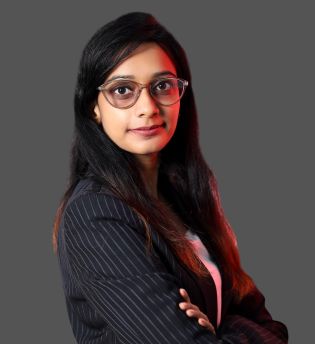
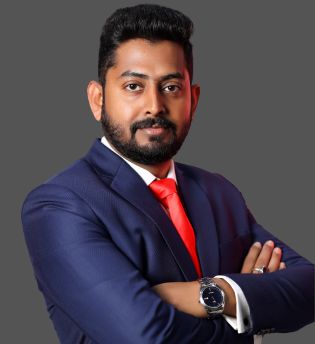
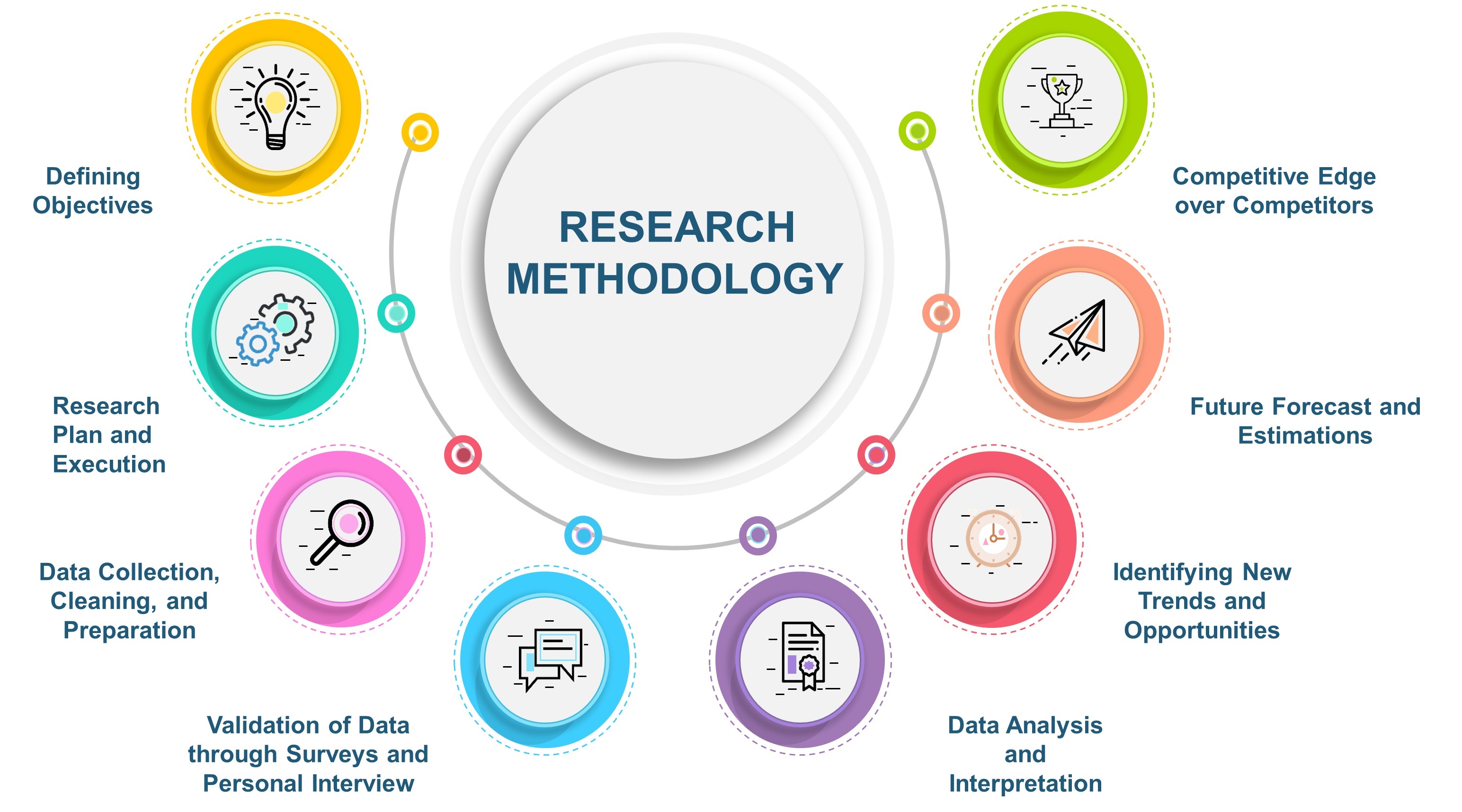

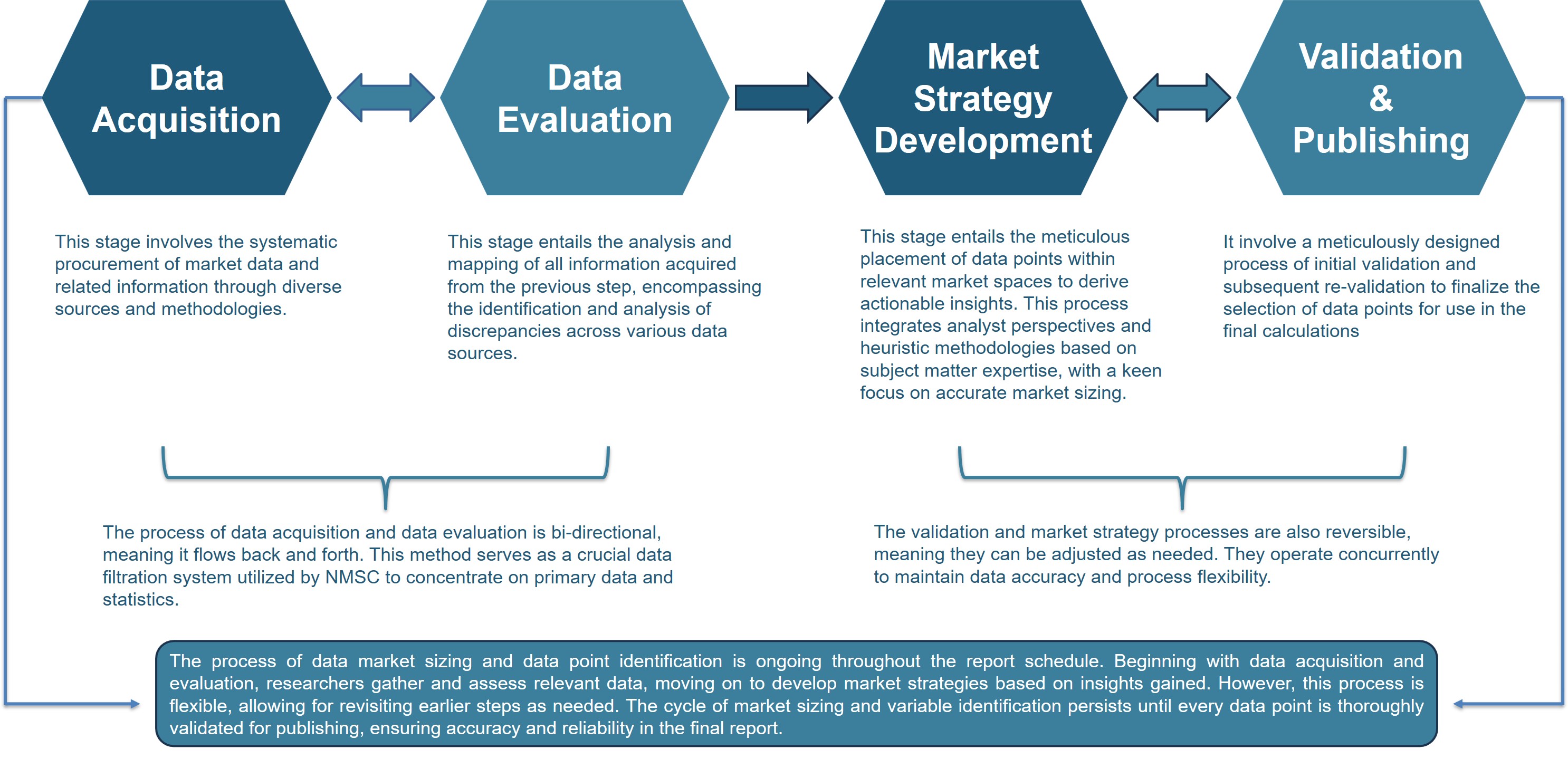
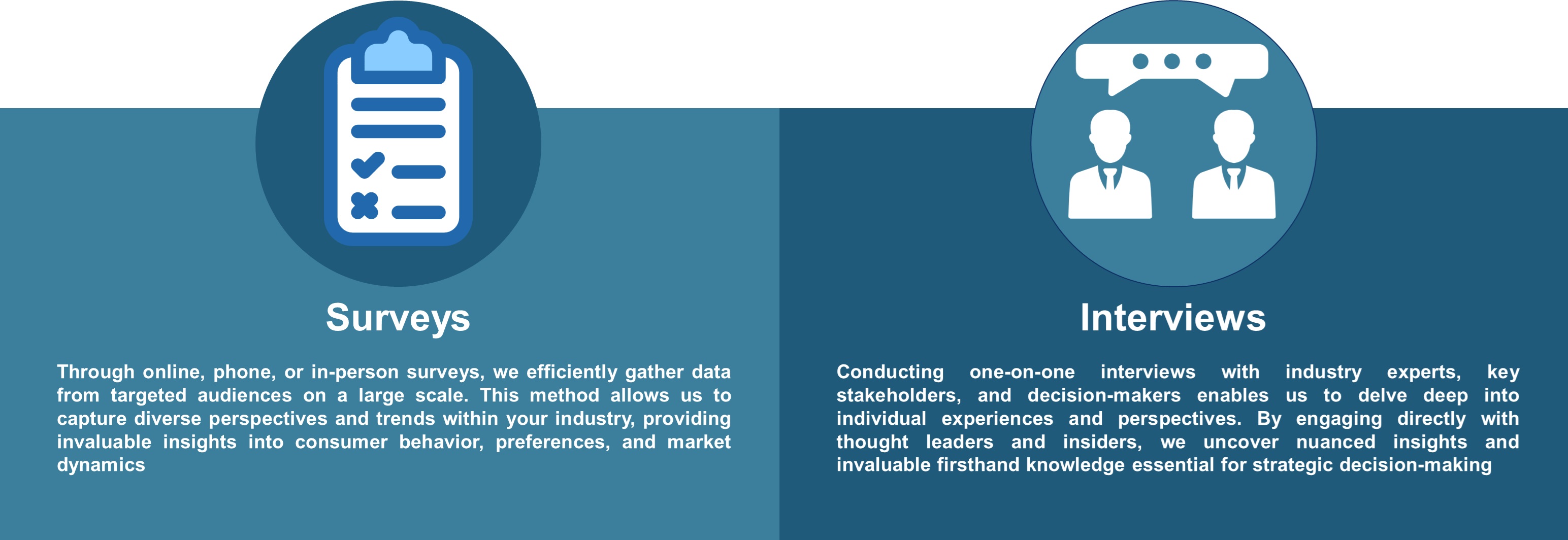











 Speak to Our Analyst
Speak to Our Analyst

























